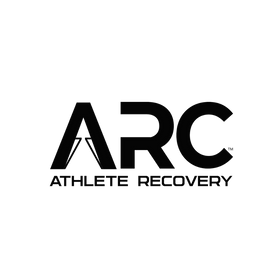Unlocking The Power of Adenosine Triphosphate (ATP)

The Power of Adenosine Triphosphate (ATP)
Uncover the significance of Adenosine triphosphate (ATP) and its impact on Red Light Therapy for increased energy levels.
Key Highlights
- Adenosine Triphosphate (ATP) is the energy currency of life, providing energy for cellular processes.
- ATP is a nucleoside triphosphate composed of a nitrogenous base (adenine), a ribose sugar, and three phosphate groups.
- ATP functions as a storage molecule for chemical energy, which can be readily released when needed.
- ATP is produced through cellular respiration, where glucose is oxidized in the mitochondria to generate ATP molecules.
- Red light therapy has been found to increase ATP synthesis in the mitochondrial matrix, leading to various health benefits.
- Increasing ATP levels can enhance cellular energy, metabolism, muscle recovery, and skin health.
Introduction
Adenosine triphosphate meaning
In order to understand the effectiveness of red light therapy in increasing ATP, it is important to first have a clear understanding of what ATP is and its role as the energy currency of life. Adenosine Triphosphate is a vital molecule that plays a crucial role in various cellular processes. It is often referred to as the "energy currency" of the cell because it provides readily releasable energy that can be used by cells for their daily functioning.
It is composed of three main components: a nitrogenous base called adenine, a ribose sugar, and three phosphate groups. The phosphate groups are the key to ATP's function as an energy storage molecule. The energy is stored in the high-energy bonds between the second and third phosphate groups, obtained from the breakdown of food molecules. When these bonds are broken through a process called hydrolysis, energy is released and can be used by the cell for various functions.
Adenosine triphosphate is produced through cellular respiration, a process that occurs in the mitochondria of cells. During cellular respiration, glucose is oxidized to generate ATP molecules. The majority of ATP synthesis occurs in the mitochondrial matrix, where glucose is broken down into carbon dioxide and water, releasing energy in the process. This energy is used to produce ATP through a series of reactions, including the electron transport chain and the citric acid cycle. This process can occur through aerobic respiration, which requires oxygen, or anaerobic respiration, which does not. Understanding the role of aerobic respiration in ATP production is crucial to understanding the energy currency of life.
In addition to ATP production, it is also important to understand how ATP is recycled in the body. It is continuously used by cells for various processes, such as ion transport, muscle contraction, nerve impulse propagation, and chemical synthesis. When ATP is hydrolyzed, it is converted into adenosine diphosphate (ADP) and inorganic phosphate, releasing energy in the process. ADP can then be converted back into ATP through various mechanisms, such as substrate phosphorylation, to ensure a constant supply of ATP for the cell's energy needs. This high demand for ATP in the body highlights its crucial role as the energy currency of life.
The Production and Recycling of ATP
ATP is constantly produced and recycled within cells to meet the energy demands of various cellular processes. The production of ATP primarily occurs through cellular respiration, a metabolic process that converts glucose into ATP. During cellular respiration, glucose molecules are broken down in the presence of oxygen, generating energy that is used to produce ATP.
ATP is also recycled through a process called ATP hydrolysis. When it is hydrolyzed, one of its phosphate groups is cleaved, releasing free energy and forming adenosine diphosphate (ADP) and an inorganic phosphate molecule. ADP can then be converted back into ATP through processes like substrate phosphorylation, where phosphate groups are added back to ADP using free energy from other molecules.
This constant production and recycling of ATP ensure that cells have a steady supply of energy to carry out their functions. ATP acts as a dynamic energy currency that is readily available and can be used as needed by cells.

ATP Production Through Cellular Respiration
Cellular respiration is the primary process by which ATP is produced in cells. It occurs in multiple stages, including glycolysis, the citric acid cycle, and oxidative phosphorylation. These processes take place within the mitochondria of cells.
The first stage of cellular respiration is glycolysis, which occurs in the cytoplasm. During this stage, a molecule of glucose is converted into two molecules of pyruvate, and a small amount of ATP is generated. The pyruvate molecules then enter the mitochondrial matrix, where they undergo further processing.
In the citric acid cycle, also known as the Krebs cycle, the pyruvate molecules are completely broken down, releasing carbon dioxide and generating high-energy electron carriers such as NADH and FADH2. These electron carriers then enter the electron transport chain, located in the inner membrane of the mitochondria.
During oxidative phosphorylation, the energy from electrons flowing through the electron transport chain is used to pump protons across the inner membrane, creating an electrochemical gradient. This gradient drives the synthesis of ATP by ATP synthase, an enzyme embedded in the inner membrane. The ATP molecules produced in this process are then utilized by the cell for various energy-requiring processes, with the help of the pyruvate dehydrogenase complex in the citric acid cycle.
Mechanisms Behind ATP Recycling in the Body
ATP molecules are continually recycled in the body to maintain a steady supply of energy for cellular processes. The recycling of ATP involves the hydrolysis of ATP into adenosine diphosphate (ADP) and inorganic phosphate (Pi), releasing energy.
The hydrolysis of ATP is catalyzed by ATP hydrolyzing enzymes, which cleave one of the phosphate groups from ATP. This process releases energy that can be used by cells. The resulting ADP molecule can then be converted back into ATP through various mechanisms, such as substrate phosphorylation.
Substrate phosphorylation is a process in which a phosphate group is added to ADP using the energy obtained from another molecule. For example, during glycolysis, a phosphate group is transferred from a molecule called phosphoenolpyruvate to ADP, resulting in the formation of ATP.
Overall, ATP recycling is vital for providing a continuous supply of energy to cells. The hydrolysis of ATP releases energy, while the synthesis of ATP from ADP replenishes the energy stores, ensuring the proper functioning of cellular processes.
Red Light and Near-Infrared Therapy Explained
Red light therapy and near-infrared therapy are non-invasive treatments that use specific wavelengths of light to promote healing and improve cellular function. These therapies have gained attention for their potential to increase ATP production in cells.
Red light therapy utilizes red light wavelengths, typically between 630 and 700 nanometers, while near-infrared therapy utilizes near-infrared wavelengths, typically between 800 and 1000 nanometers. Both types of therapy penetrate the skin and are absorbed by the mitochondria, specifically in the mitochondrial matrix.
Once absorbed, the light energy stimulates oxidative phosphorylation, a process in which ATP is produced in the mitochondria. This stimulation leads to an increase in ATP production, which can enhance cellular energy metabolism and improve cellular function.
The use of red light and near-infrared therapy has shown promising results in various health conditions, including wound healing, pain management, and skin rejuvenation. The specific mechanisms by which these therapies increase ATP production are still being studied, but their potential to enhance cellular energy production makes them a promising therapeutic option.
Understanding How Red Light Therapy Works
Cellular respiration is the primary process by which ATP is produced in cells. It occurs in multiple stages, including glycolysis, the citric acid cycle, and oxidative phosphorylation. These processes take place within the mitochondria of cells.
The first stage of cellular respiration is glycolysis, which occurs in the cytoplasm. During this stage, a molecule of glucose is converted into two molecules of pyruvate, and a small amount of ATP is generated. The pyruvate molecules then enter the mitochondrial matrix, where they undergo further processing.
In the citric acid cycle, also known as the Krebs cycle, the pyruvate molecules are completely broken down, releasing carbon dioxide and generating high-energy electron carriers such as NADH and FADH2. These electron carriers then enter the electron transport chain, located in the inner membrane of the mitochondria.
During oxidative phosphorylation, the energy from electrons flowing through the electron transport chain is used to pump protons across the inner membrane, creating an electrochemical gradient. This gradient drives the synthesis of ATP by ATP synthase, an enzyme embedded in the inner membrane. The ATP molecules produced in this process are then utilized by the cell for various energy-requiring processes.
The Science Behind Near-Infrared Therapy
Near-infrared therapy works on similar principles as red light therapy but utilizes near-infrared wavelengths, which penetrate deeper into the tissue. These wavelengths are absorbed by the mitochondria in the mitochondrial matrix, where they stimulate oxidative phosphorylation.
The absorption of near-infrared light by the mitochondria stimulates the activity of cytochrome c oxidase, similar to red light therapy. This activation enhances the electron transport chain and increases ATP synthesis through oxidative phosphorylation.
The deeper penetration of near-infrared wavelengths allows for the stimulation of ATP production in deeper tissues, making near-infrared therapy suitable for treating conditions that involve deeper layers of tissue.
While the mechanisms of near-infrared therapy are still being studied, the increase in ATP production and enhanced cellular energy metabolism are believed to be key factors in the therapeutic effects of near-infrared therapy. By promoting cellular function and energy production, near-infrared therapy has shown potential in various applications, such as pain management and tissue regeneration.
Increasing ATP with Red Light + Near Infrared Therapy
Red light therapy has been found to increase ATP production in cells through its effects on mitochondrial function. By stimulating the mitochondria in the mitochondrial matrix, red light therapy enhances ATP synthesis through oxidative phosphorylation.
The absorption of red light wavelengths by the mitochondria leads to a photochemical reaction that activates the enzyme cytochrome c oxidase, which plays a crucial role in the electron transport chain. This activation increases the efficiency of ATP production, resulting in higher levels of ATP within the cells.
The increased ATP levels provide more energy for cellular processes, promoting optimal cell function and supporting cellular repair and regeneration. This increased energy can have various health benefits, such as improved tissue healing, reduced inflammation, and enhanced cellular metabolism.
Evidence Supporting Red Light Therapy’s Effectiveness
The effectiveness of red light therapy in increasing ATP production has been supported by numerous studies and clinical trials. These investigations have demonstrated the positive effects of red light therapy on cellular energy metabolism and its potential health benefits.
Clinical trials have shown that red light therapy can increase ATP synthesis in various tissues and cell types. This increase in ATP production has been linked to improvements in wound healing, reduction of pain and inflammation, and enhanced tissue repair.
Additionally, research has shown that red light therapy can improve cellular metabolism and enhance mitochondrial function. By stimulating ATP synthesis, red light therapy promotes optimal cellular energy production and supports overall cell function.
While more research is needed to fully understand the mechanisms and potential applications of red light therapy, the existing evidence suggests that it is a promising therapeutic modality for increasing ATP levels and promoting cellular health.
Case Studies and Research Findings
Several case studies and research findings have provided empirical evidence supporting the effectiveness of red light therapy in increasing ATP production and improving cellular function.
In a study published in the Journal of Clinical and Aesthetic Dermatology, researchers investigated the effects of red light therapy on ATP synthesis in skin cells. They found that red light therapy significantly increased ATP production, leading to improvements in cellular function and enhanced tissue repair.
Another study conducted by researchers at the University of Miami Miller School of Medicine examined the effects of red light therapy on muscle recovery and performance in athletes. The study found that red light therapy increased ATP synthesis in muscle cells, resulting in faster recovery and improved physical performance.
These and other research findings highlight the potential of red light therapy in increasing ATP levels and promoting cellular health. While more studies are needed to fully understand the mechanisms and optimize treatment protocols, the existing evidence suggests that red light therapy can be a valuable tool for enhancing cellular energy production.
Practical Tips for Using Red Light + Near Infrared Therapy
When using red light therapy to increase ATP levels and promote cellular health, there are some practical tips to keep in mind for optimal results.
First, it is important to follow the recommended treatment regimen. Red light therapy typically involves several sessions spread out over a period of time. Consistency is key to achieving the desired benefits, so it is essential to adhere to the recommended treatment schedule.
Second, it is important to use the appropriate equipment. Red light therapy devices come in various forms, including handheld devices and light panels. Choose a device that emits the appropriate wavelengths of red light and provides sufficient power for effective treatment.
Lastly, ensure that the treated area is exposed to the red light for the recommended amount of time. The duration of each session may vary depending on the specific condition being treated. Follow the instructions provided with the red light therapy device or consult with a healthcare professional for guidance.
By following these practical tips, individuals can maximize the benefits of red light therapy and support ATP production for improved cellular functioning.
Health Benefits of Increased ATP Levels
Increased ATP levels in cells have several health benefits due to the role ATP plays in various metabolic processes and cellular functions.
One of the key benefits is improved muscle contraction. ATP is the primary source of energy for muscle cells, and increased ATP levels can enhance muscle strength and endurance.
Additionally, ATP is involved in signal transduction, facilitating communication between cells. Higher ATP levels can improve the efficiency of cellular signaling and promote proper cell-to-cell communication.
Furthermore, ATP is essential for impulse propagation in nerve cells, enabling the transmission of signals throughout the nervous system. Increased ATP levels can support optimal nerve function and enhance overall neurological health.
By promoting these fundamental cellular processes, increased ATP levels can have a positive impact on overall health and well-being.
Boosting Cellular Energy and Metabolism
Boosting cellular energy and metabolism through increased ATP levels can have several beneficial effects on overall health.
ATP is involved in various metabolic reactions within cells, providing the energy required for these processes to occur. By increasing ATP levels, cellular energy production is enhanced, leading to more efficient metabolism and improved overall cellular function.
Additionally, ATP serves as the energy currency of cells, supplying the necessary energy for numerous cellular processes. Higher ATP levels mean more energy available for cellular functions such as DNA synthesis, protein synthesis, and ion transport.
By boosting cellular energy and metabolism, increased ATP levels can support optimal cell function, promote tissue repair and regeneration, and contribute to overall health and vitality.
Improving Skin Health and Wound Healing
When using red light therapy to increase ATP levels and promote cellular health, there are some practical tips to keep in mind for optimal results.
First, it is important to follow the recommended treatment regimen Red light therapy typically involves several sessions spread out over a period of time. Consistency is key to achieving the desired benefits, so it is essential to adhere to the recommended treatment schedule.
Second, it is important to use the appropriate equipment. Red light therapy devices come in various forms, it is important your device emits the appropriate wavelengths of red light and provides sufficient power for effective treatment (irradiance).
Lastly, ensure that the treated area is exposed to the red light for the recommended amount of time. The duration of each session may vary depending on the specific condition being treated. Follow the instructions provided with the red light therapy device or consult with a healthcare professional for guidance.
By following these practical tips, individuals can maximize the benefits of red light therapy and support ATP production for improved cellular functioning.
Potential Side Effects and Considerations
While red light + near infrared therapy is generally considered safe and well-tolerated, there are a few potential side effects and considerations to be aware of.
Firstly, some individuals may experience mild skin irritation or redness at the treatment site. This is usually temporary and resolves on its own.
Secondly, excessive exposure to red light therapy may lead to low levels of oxygen consumption by cells. While this is unlikely to cause significant harm, it is important to use red light therapy as directed and avoid overexposure.
Lastly, individuals with certain medical conditions or taking specific medications should consult with a healthcare professional before undergoing red light therapy to ensure its safety and suitability for their specific situation.
Overall, when used correctly and with consideration for individual circumstances, red light therapy is a safe and effective treatment option.
Who Should Avoid Red Light Therapy?
While red light therapy is generally safe for most individuals, there are specific groups who should avoid or seek medical advice before undergoing treatment.
Pregnant women should consult with their healthcare provider before using red light therapy to ensure its safety during pregnancy. The effects of red light therapy on unborn fetuses are not well-studied, and caution is advised.
Individuals with a history of photosensitivity or light-sensitive disorders should avoid red light therapy or seek medical advice before starting treatment. Certain medications or medical conditions can increase sensitivity to light, potentially leading to adverse effects.
Those with a history of skin cancer or currently undergoing cancer treatment should also avoid red light therapy, as it may stimulate cell growth and potentially impact the progression of cancerous cells.
It is always important to prioritize patient safety and seek professional advice before undergoing any new treatment, including red light therapy.
Managing Expectations and Understanding Limitations
When using red light therapy to increase ATP levels and promote cellular health, there are some practical tips to keep in mind for optimal results.
First, it is important to follow the recommended treatment regimen. Red light therapy typically involves several sessions spread out over a period of time. Consistency is key to achieving the desired benefits, so it is essential to adhere to the recommended treatment schedule.
Second, it is important to use the appropriate equipment. Red light therapy devices come in various forms, it is important your device emits the appropriate wavelengths of red light and provides sufficient power for effective treatment (irradiance).
Lastly, ensure that the treated area is exposed to the red light for the recommended amount of time. The duration of each session may vary depending on the specific condition being treated. Follow the instructions provided with the red light therapy device or consult with a healthcare professional for guidance.
By following these practical tips, individuals can maximize the benefits of red light therapy and support ATP production for improved cellular functioning.
Conclusion
In conclusion, understanding Adenosine Triphosphate (ATP) and its role as the energy currency of life is crucial for comprehending various physiological processes. Red Light Therapy has shown promising results in increasing ATP levels, leading to improved cellular energy, muscle recovery, and skin health. Evidence supports the effectiveness of Red Light Therapy in enhancing overall well-being. However, it's essential to be aware of potential side effects and considerations before incorporating this therapy into your routine. By staying informed and utilizing practical tips, you can optimize the benefits of Red Light Therapy for your health and vitality.
References/Learn More:
https://doi.org/10.1126%2Fscience.aaf6846
https://pubmed.ncbi.nlm.nih.gov/9730835
https://ui.adsabs.harvard.edu/abs/2017Sci...356..753P
https://www.ncbi.nlm.nih.gov/pmc/articles/PMC3662476
https://www.ncbi.nlm.nih.gov/pmc/articles/PMC4455760
https://www.ncbi.nlm.nih.gov/pmc/articles/PMC3288797/






